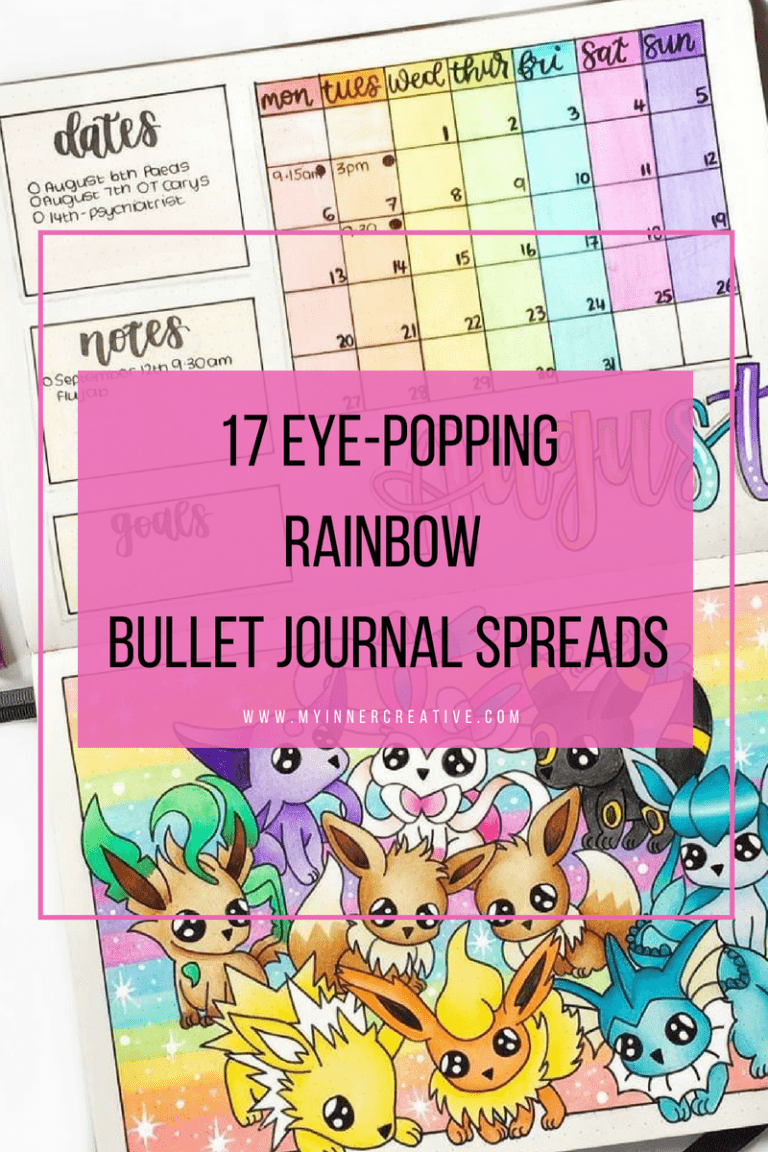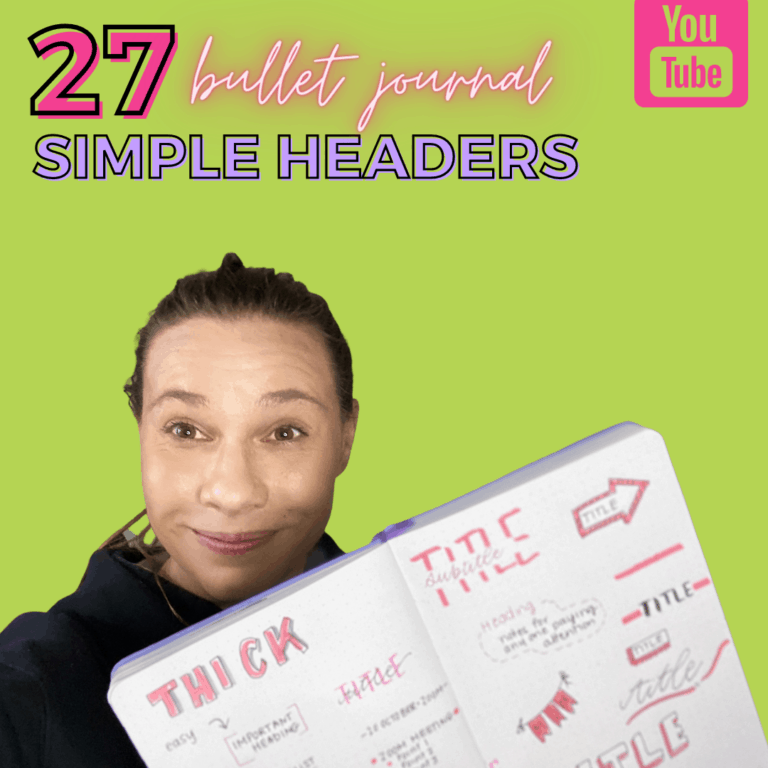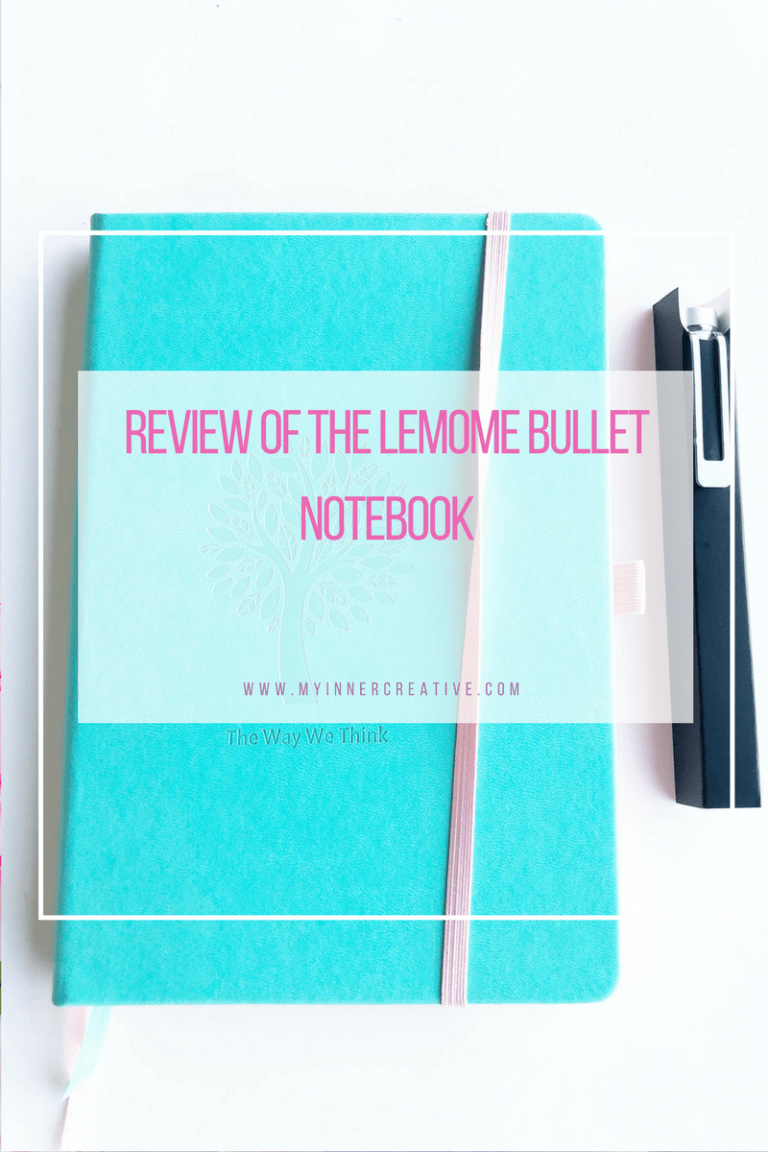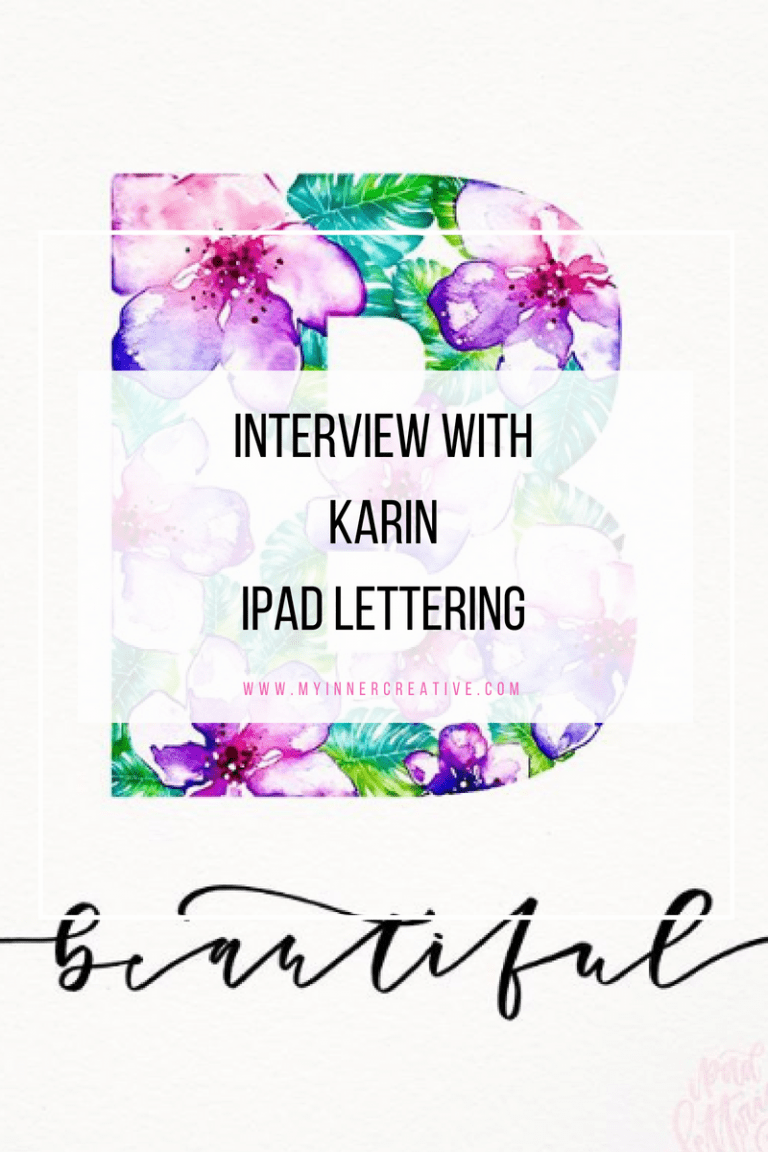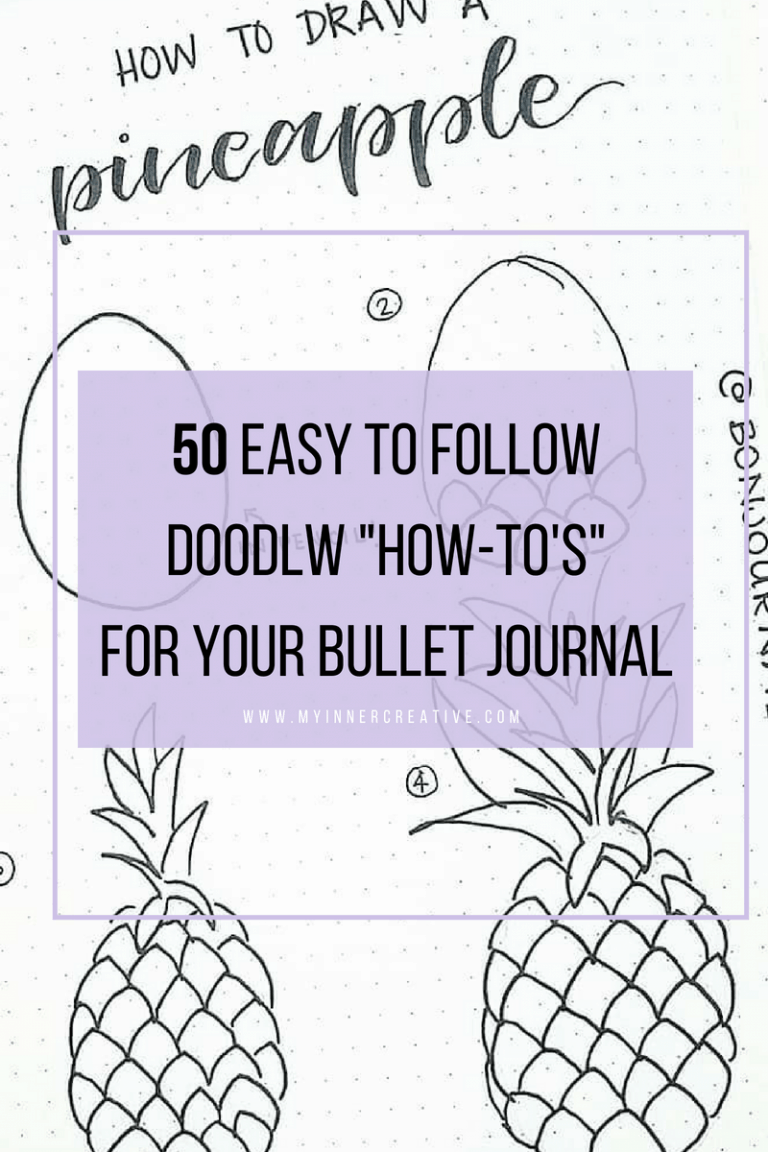Simple Floral Doodle Tutorials – 11 Step-by-Step flowers!
Hey, Masha here from Masha Plans. In this post, we’ll be talking about doodling flowers in your Bullet Journal with this simple floral doodle tutorial!
Want to meet Masha and Nicola?
https://youtube.com/live/vTwrs9HE7Ko
And don’t worry. Even if you’ve never doodled anything in your life before, after reading this post, you’ll be able to draw at least 11 fun and easy floral doodles.
But let’s start from the beginning.
Doodling in your bullet journal offers a therapeutic escape that nurtures your mental well-being. It provides a creative outlet for self-expression, allowing you to unwind and detach from daily stresses. Engaging in spontaneous doodles stimulates your brain, fostering focus and mindfulness.
As you fill the pages with intricate designs and patterns, a sense of accomplishment and satisfaction emerges, boosting self-confidence. Doodling also encourages relaxation and helps reduce anxiety, promoting a sense of calm and tranquility. In the realm of your bullet journal, doodles become a meditative practice that positively impacts your mental health, granting you a serene sanctuary of self-care.
How to doodle flowers for beginners?
Doodling flowers as a beginner is a delightful and accessible creative outlet. To start, choose simple flower shapes like circles, ovals, or triangles for the petals. Draw a central dot or small circle to represent the flower’s core. Extend lines from this center to form petals, experimenting with various lengths and shapes. Play with symmetry or asymmetry for a unique touch. Gradually, add details like veins, lines, or dots to enhance the petals. Don’t worry about perfection – embrace imperfections that make your doodles charming. Practice regularly, observing real flowers or online references for inspiration. With patience and exploration, you’ll develop your own style and create captivating flower doodles.
How To Create a Floral Doodle?
Doodling is a very fun way to express yourself. It’s probably the easiest way to draw things, and since it can be a bit cartoonish, it doesn’t require things to look exactly the way they do in real life.
This is especially true about doodling flowers.
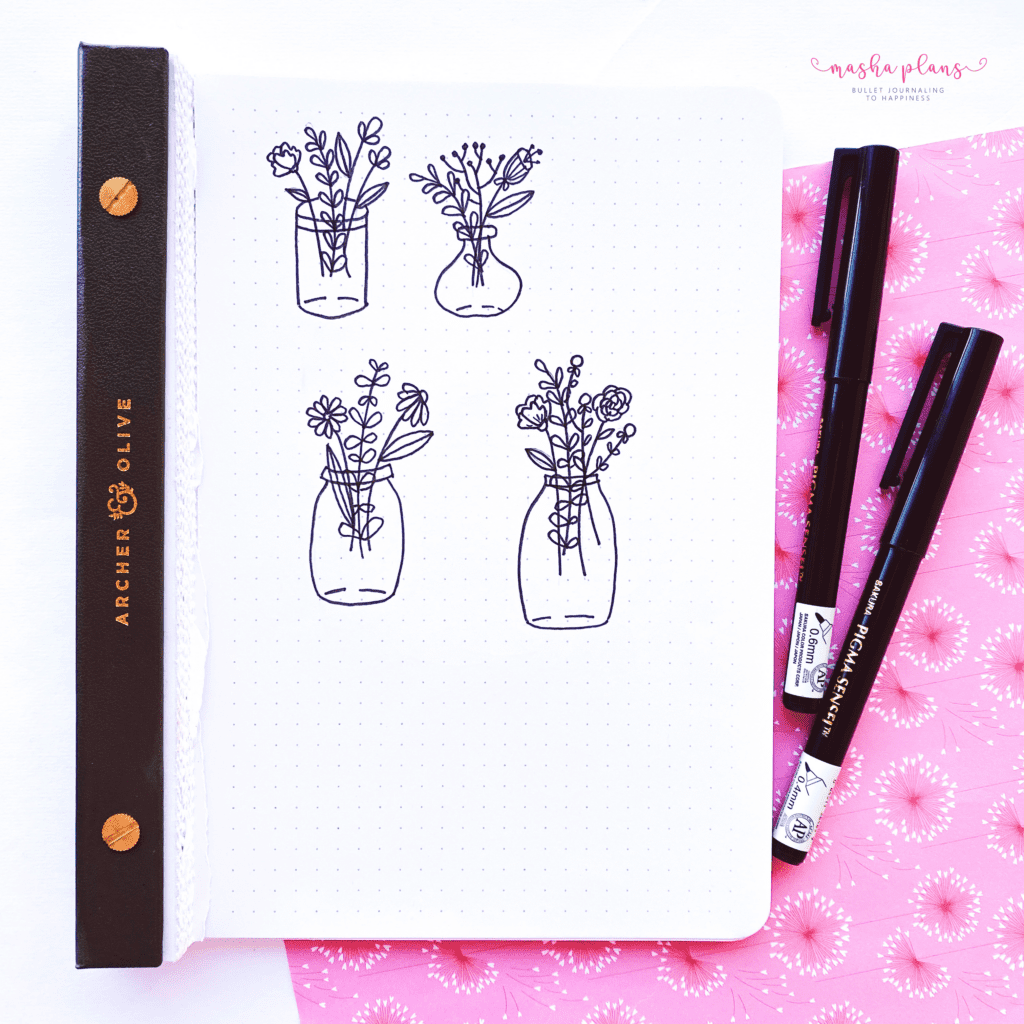
Nature itself is very varied and asymmetrical, so when you sit down to doodle flowers, you can go as crazy as you want with shapes and colors.
So how do you start with doodling? Easy, it’s all about basic shapes and teaching yourself to see them in things around you.
A basic flower, for example, is just a circle, a straight line, and some curved lines. When you see it like that, you’ll be able to doodle almost anything you want.
If you want to learn more about doodling, be sure to check my free course Doodling 101, where I share all the tips, tricks, and techniques to start doodling, even if you’re a complete beginner.
Doodling Supplies you might need
Before we start drawing these fun and easy flower doodles, I wanted o mention some supplies.
You’re probably waiting for a huge list! Actually, to start doodling, you just need a piece of paper and a pen.
But if you’re a bit more serious about it, here are some of my favorite supplies:
- Pen and eraser. These are very useful, especially when you’re a beginner and afraid to make too many mistakes.
- Fineliners. You can use any pen you want, but fineliner pens are the best for doodling, I found, especially because they come in a wide variety of pen tips, which is fun to play with when you doodle.
- A journal. You can doodle on any piece of paper, but using a journal can be more beneficial. First of all, that way, you create a collection of things you can doodle. Secondly – it will allow you to clearly see your progress since the more you doodle, the better you become.
As an optional step, you can also use some markers to add color. I always recommend getting Crayola Super Tips since they come in so many colors and are pretty affordable.
What are some other bullet journal doodle supplies you might enjoy?
here are some additional supplies that can enhance your flower doodling experience:
- Watercolors or Markers: Adding color to your flower doodles can bring them to life. Watercolors or markers can add vibrancy and depth to your creations, allowing you to explore different color palettes and shading techniques.
- Colored Pencils: Colored pencils offer a versatile medium for adding color to your flower doodles. They allow for controlled shading and blending, giving your doodles a soft and textured look.
- Brush Pens: Brush pens are excellent for creating dynamic and expressive lines. They can add a sense of movement and fluidity to your flower doodles, allowing you to experiment with different stroke widths.
- Stencil or Templates: If you’re looking for consistent shapes and patterns, stencils or templates can be handy tools. They can help you create uniform petals, leaves, or other floral elements.
- Reference Materials: Having access to books, magazines, or online resources that showcase various flower types and botanical details can inspire and guide your doodling process.
- Blending Tools: If you’re working with colored pencils or other color mediums, blending tools like blending stumps or tortillons can help you achieve smooth transitions and gradients.
- Sketchbook with Different Paper Types: Consider using a sketchbook with a variety of paper textures and weights. This can provide interesting surfaces to experiment with different doodling techniques.
- Rulers and Compasses: These tools can assist you in creating precise shapes, lines, and symmetrical compositions in your flower doodles.
- Gel Pens: Gel pens can add a touch of shine and texture to your doodles. They come in various metallic and glittery options that can enhance the visual appeal of your flowers.
- Pastels: Soft pastels or chalk pastels can create a beautiful, dreamy effect in your flower doodles. They allow for blending and layering to achieve a unique look.
Remember, the supplies you choose will depend on your preferences and the level of detail you want to achieve in your flower doodles. Experimenting with different tools can add variety and excitement to your creative proc
Ok, we have our supplies ready; time to start doodling!
Easy Floral Doodle tutorial – How to draw flowers
Doodling doesn’t have to be complicated, and these tutorials will help you see that.
Following a tutorial is actually the best way to practice doodling, especially as a beginner. It helps you to learn the skill of seeing basic shapes in things.
For flowers, I love following tutorials because even if it’s the same flower, you can still see how they have different styles depending on the artist who created it.
So I hope you like my style and have fun with these floral doodles.
How To Draw A Pink Flower
We’re starting with a very simple pink flower. This tutorial is a bit more complicated equate it has several flower buds on the step, but you can just do one.
As you can see, it’s just a few simple steps to follow, and you get a cute little flower.
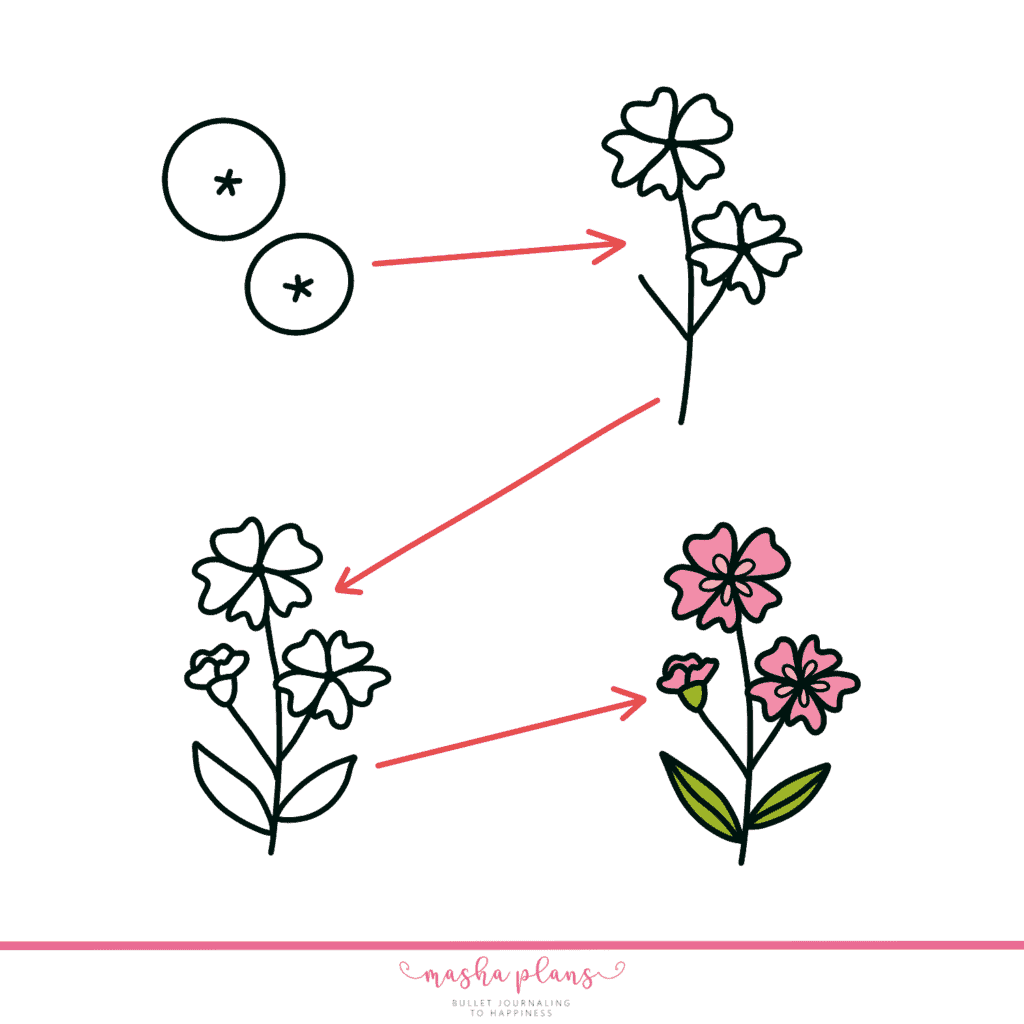
Brightly Colored Flower Doodle
What I love about doodling flowers is that you can use any colors and draw any shapes you want.
This flower is a good example. I’m not sure this is something that exists in real life, but it works very well as a simple flower doodle idea.
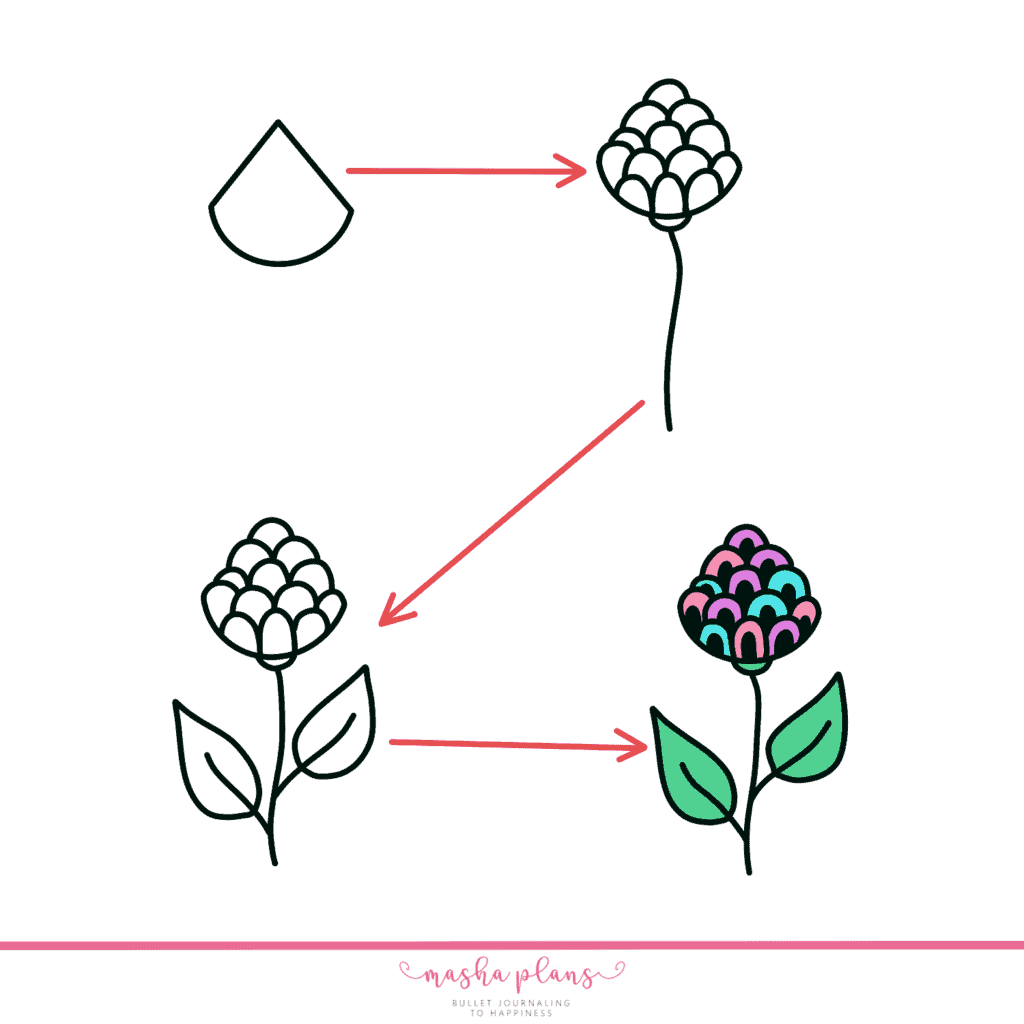
Flower Doodle With Patterns
I call all the doodles here by color or other specifics because I’m really bad with the names of flowers. And I’m quite sure most of these are not actual flowers.
But yeah, here is another idea for you – to add patterns to the petals of leaves. It can add variety and can be pretty calming.
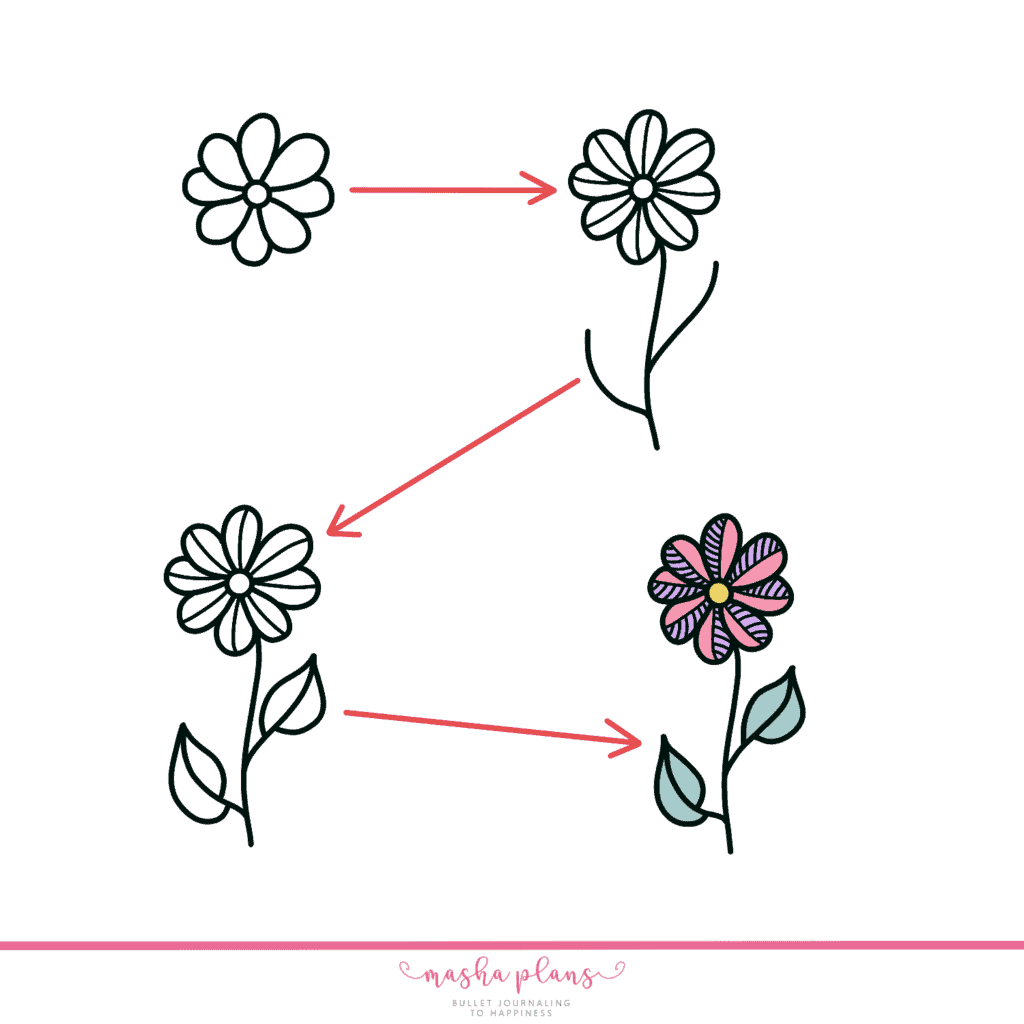
Bright Pink Flower
What can I say, I’m a huge fan of pink, and I feel like it’s such a perfect color for flowers!
This is a very easy doodle, all you need to know how to draw is a teardrop shape, and you’ll be able to easily recreate this flower.
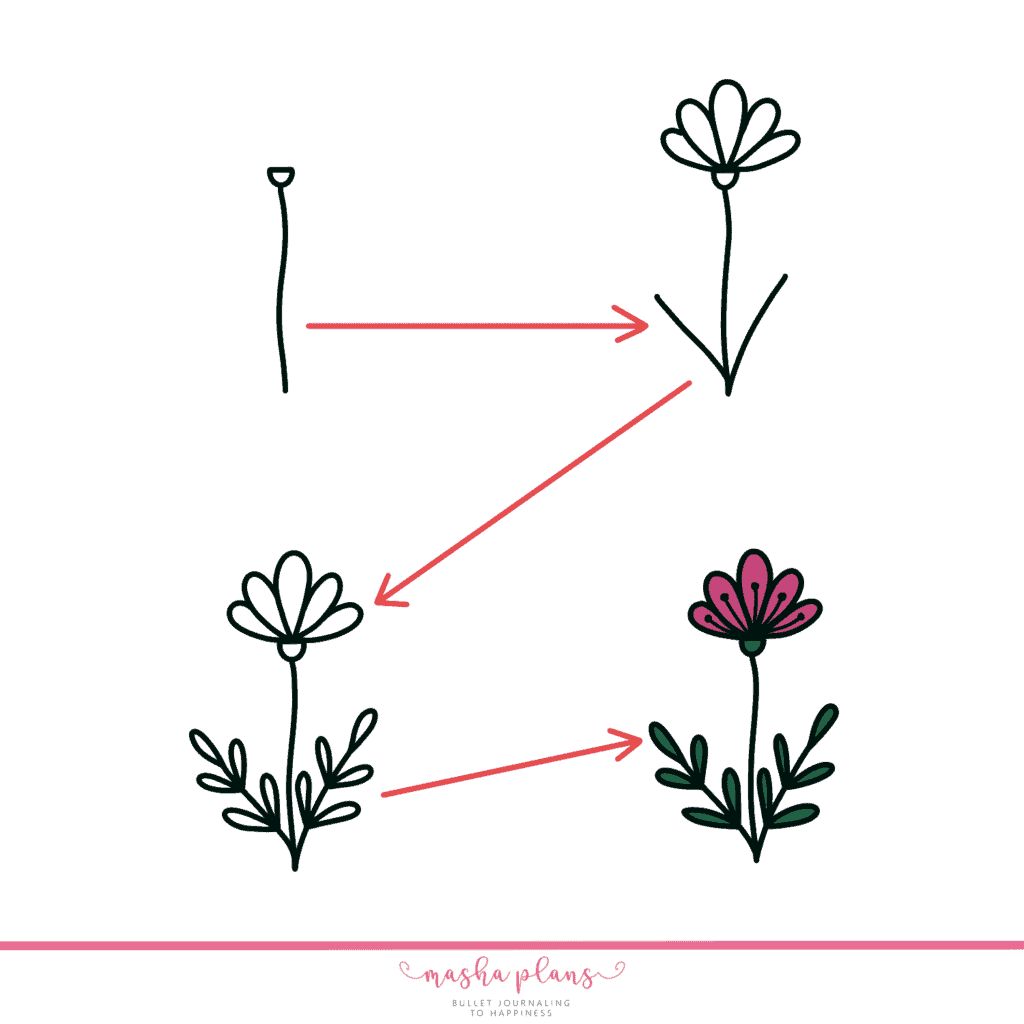
Curvy Flower Doodle
Here is another flower based on a teardrop shape. It’s such a versatile shape, and you can create so many doodles from it!
And it doesn’t have to have those curvy stems; I just really liked the idea, and I think it looks fun and different.
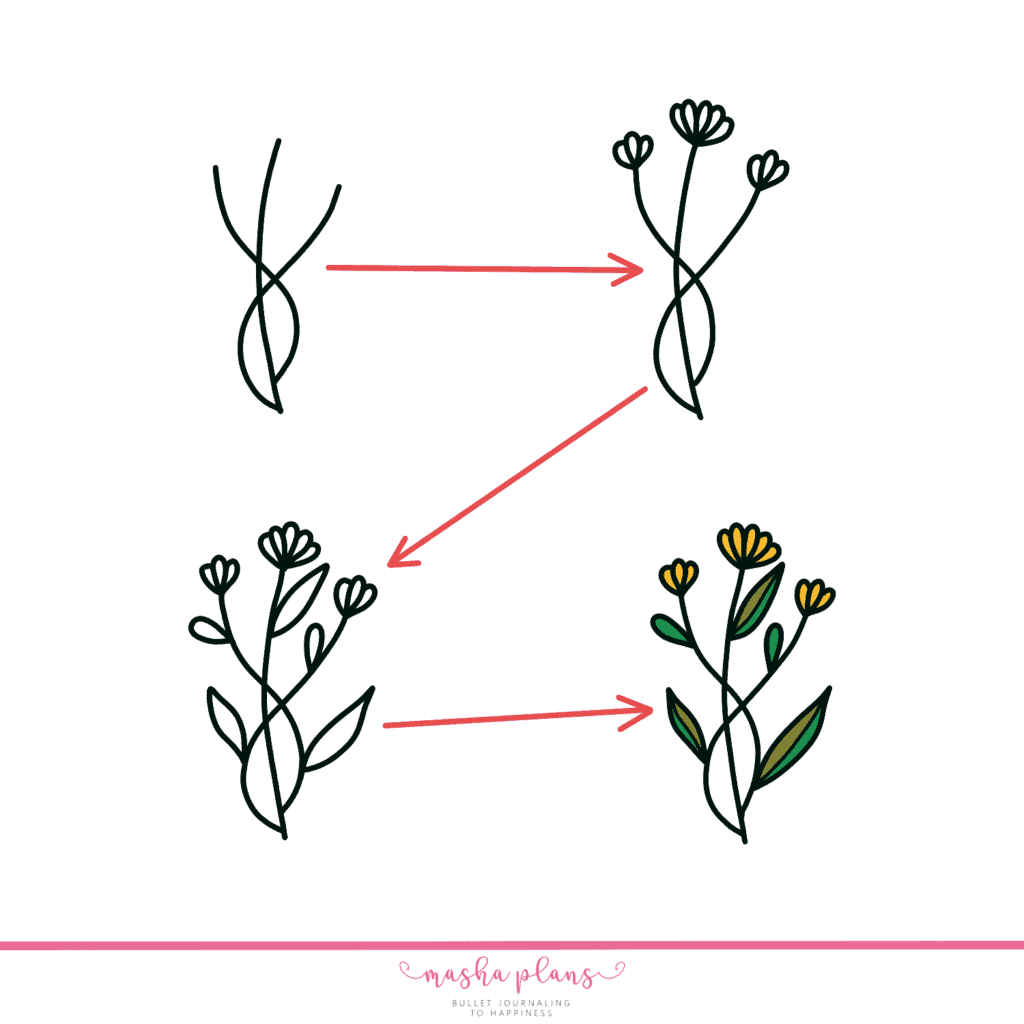
Red Flower Doodle
With this one, I’m pretty sure it’s a rose. That’s why I colored it red. But just to stay safe, I’m naming it a red flower since I might be wrong.
Doodling flowers and actually knowing flower names are two absolutely different things.
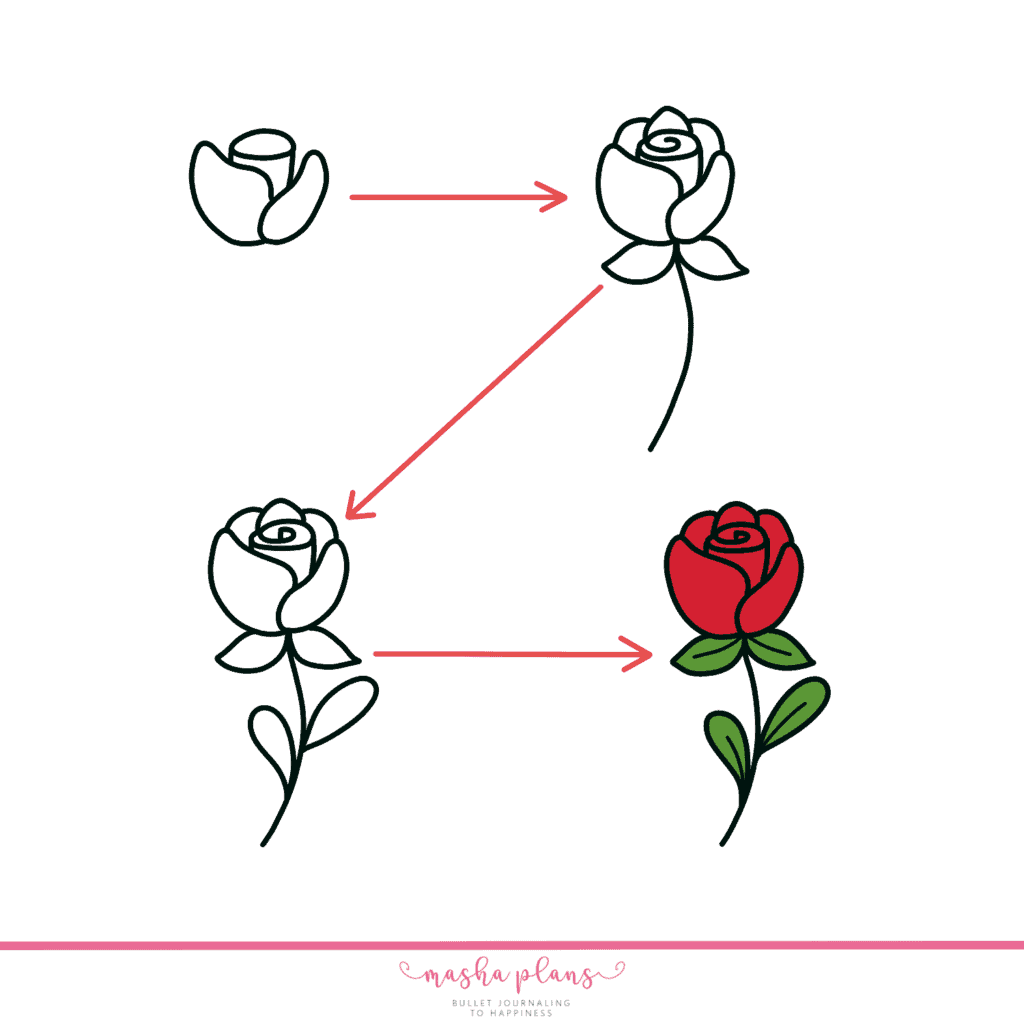
Purple Flower Doodle
I like this one because it’s more than just one flower, so it has a lot of volume to it.
And I used here a contrast of colors. Sometimes coloring things in black can create a very fun and creative effect.
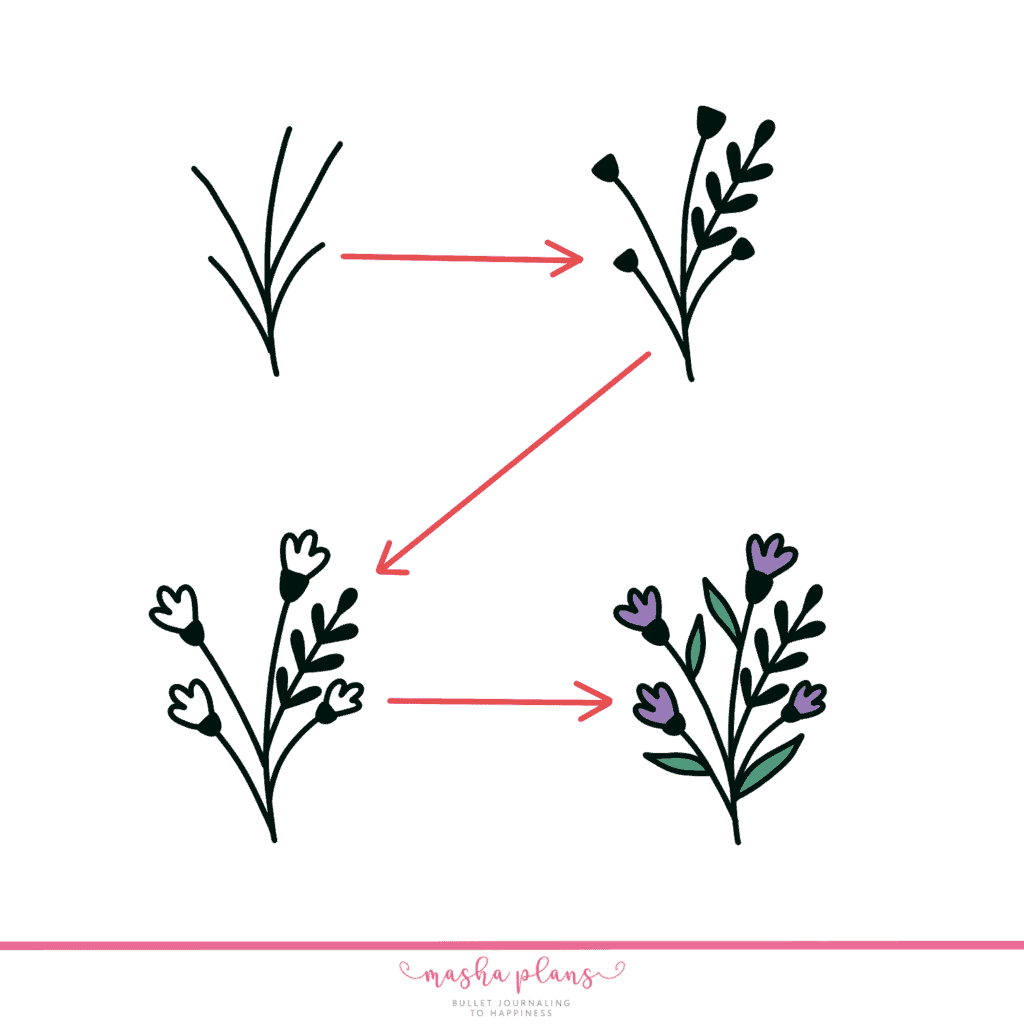
Whimsical Flower Doodle
I’m pretty sure these flowers don’t have some curved stem in real life, but somehow I thought this could be a fun way to make the doodle look different.
You can definitely try and add those flowers to a straight step, and your doodle will have a completely different look. Play around with it!
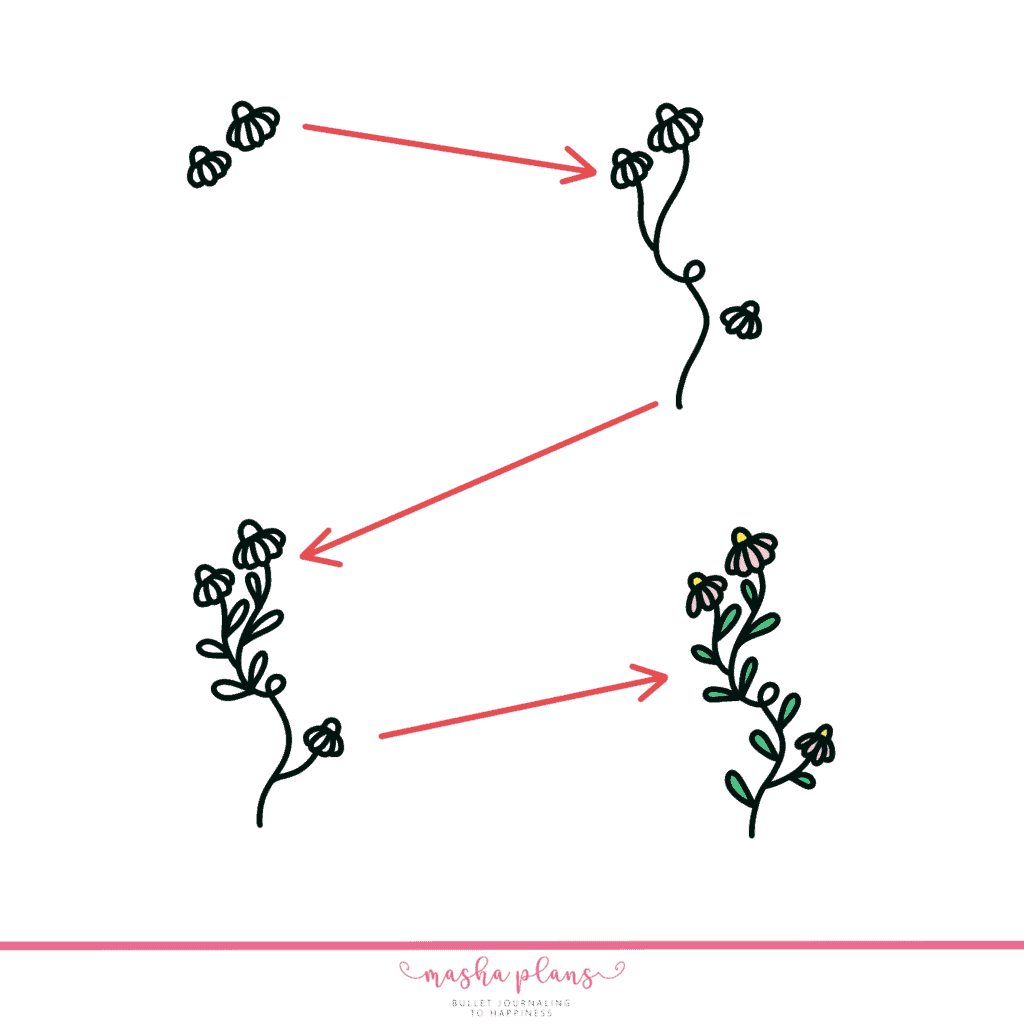
Flower With Red Berries
I don’t know if this counts as a vine or an actual flower. I guess it all depends on whether the little red dots are berries or flowers.
It could be both; however, you name it, this is a fun and very easy doodle to draw.
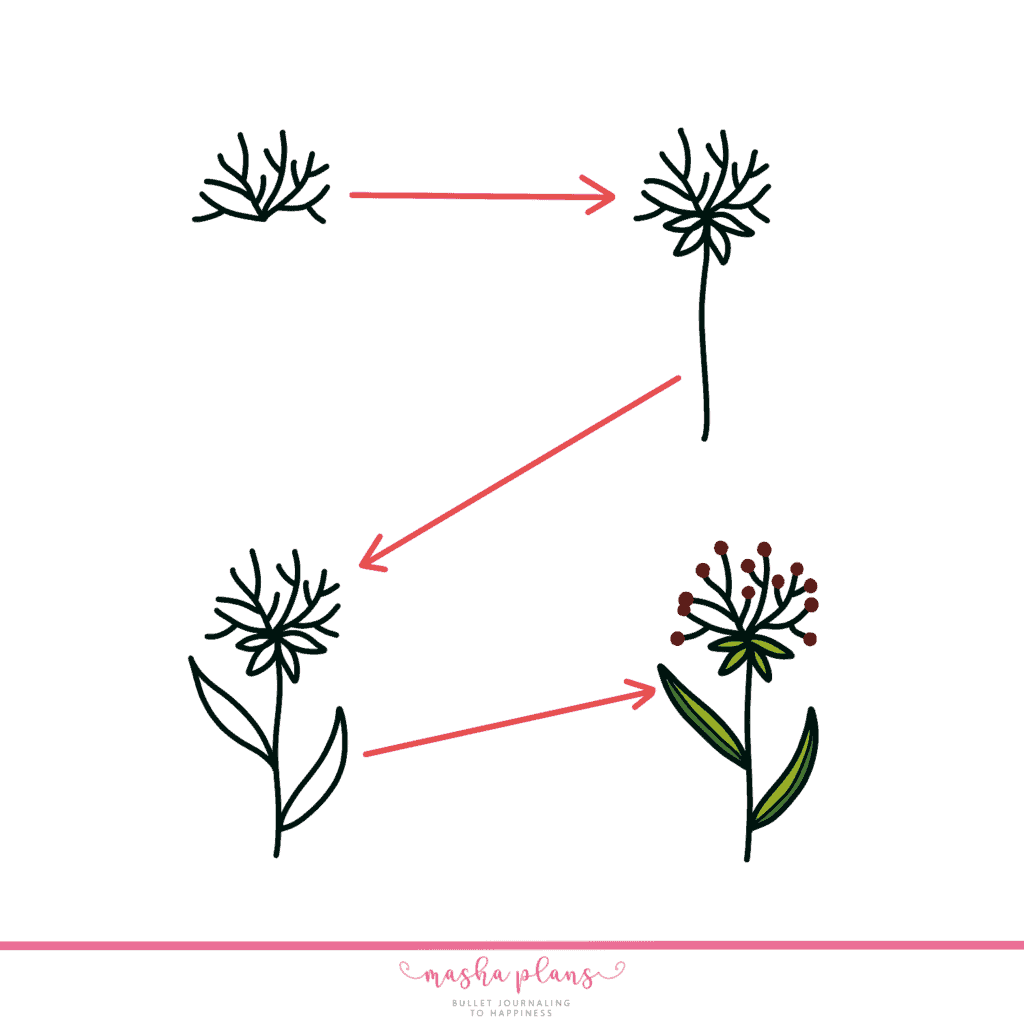
Blue Bell Flower Doodle
This is actually a bellflower, I think. Even though bellflowers are actually purple, I think since the shape is the same, we can keep the name.
And not this cool coloring effect for the leaves. Divide it in half and use a lighter shade of green on one and a darker shade on the other.
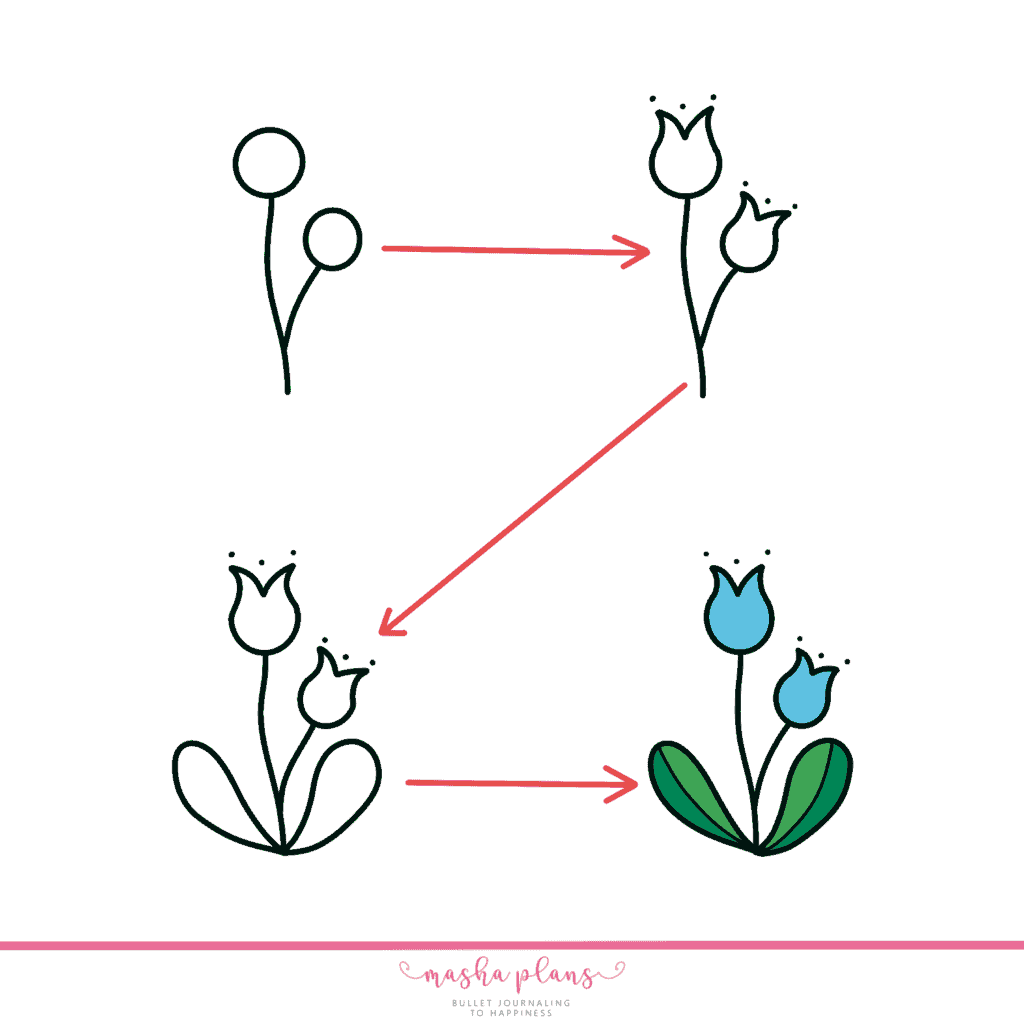
Easy To Draw Long Flower Doodle
This one is very basic, and as you can see, all you need to doodle it is the teardrop shape. But you can definitely make it more interesting by adding extra little details.
If you want to turn it into a vine, all you need is to add one teardrop shape on the top instead of five. So it’s one tutorial that works for two things.
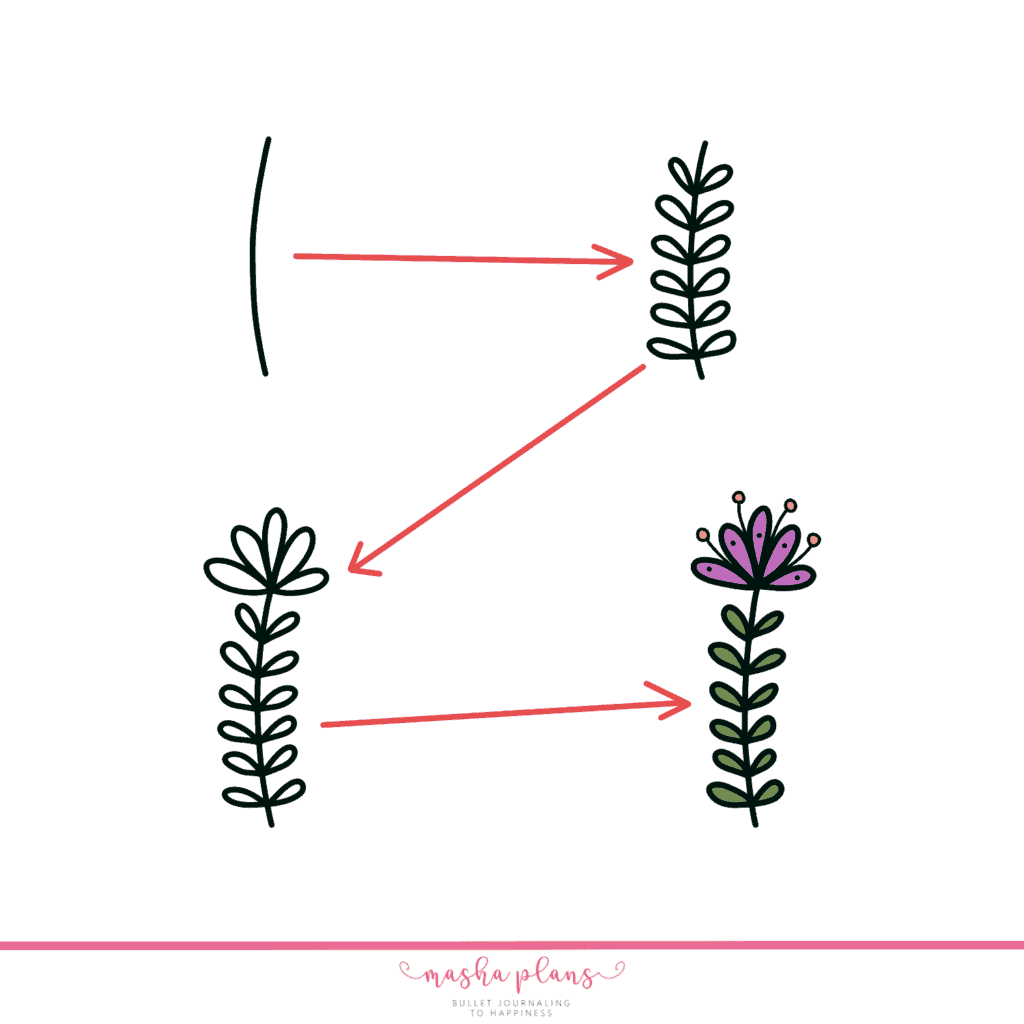
Well, here are my 11 ideas for simple and fun flower doodles.
If you’re planning to recreate those, be sure to tag me on Instagram @mashaplans, I’d love to see your doodles.
Making time to doodle in your bullet journal
Incorporating doodling into your bullet journal routine can be a rewarding practice that enhances your overall well-being. Carving out dedicated time for doodling allows you to tap into your creative side and reap the mental health benefits it offers. Consider these strategies to effectively make time for doodling in your bullet journal:
1. Prioritize Self-Care: Recognize the importance of self-care and view doodling as a valuable component of it. Allocate time each day or week specifically for doodling, treating it as a non-negotiable self-care ritual.
2. Integrate with Tasks: Seamlessly blend doodling with your daily to-do lists and planning. Dedicate a section of your bullet journal for doodles, whether it’s alongside your tasks or as a separate spread. This way, doodling becomes an integral part of your journaling routine.
3. Micro Moments of Doodling: You don’t need extensive periods to doodle; even short bursts can be effective. Capitalize on micro moments throughout your day, such as during breaks or while waiting, to add quick doodles to your journal.
4. Scheduled Doodle Breaks: Designate specific time slots during your day for focused doodling sessions. Treat these breaks as timeouts to recharge and engage in a calming, creative activity.
5. Reflect and Unwind: Incorporate doodling as a reflective practice. Wind down at the end of the day by doodling about your experiences, emotions, or highlights. This meditative process can aid in processing thoughts and promote relaxation.
6. Experiment with Themes: Spice up your bullet journal by experimenting with themed doodles. Whether it’s nature, quotes, or abstract patterns, exploring different themes keeps doodling exciting and encourages your artistic growth.
7. Digital Detox: Disconnect from screens and indulge in analog creativity. Doodling in your bullet journal provides a welcome break from digital devices, offering a tactile and soothing experience.
By intentionally making time for doodling in your bullet journal, you weave a thread of creativity and mindfulness into your daily routine. Embrace the therapeutic benefits and watch as your journal becomes not only a planner but also a canvas of artistic expression and mental rejuvenation.
I cant draw, what should I do?
When you find yourself unable to doodle, consider these steps to overcome creative blocks and reignite your artistic inspiration:
- Relax and Breathe: Take a moment to relax and practice deep breathing. Calming your mind can help alleviate any stress or pressure you may be feeling about doodling.
- Start Small: Begin with simple shapes or patterns. Sometimes, the act of putting pen to paper, regardless of the outcome, can kickstart your creativity.
- Use Prompts: Seek inspiration from prompts or themes. They can guide your doodling in a specific direction and provide a starting point.
- Look Around: Observe your surroundings for inspiration. Everyday objects, nature, or even emotions can spark ideas for doodles.
- Copy and Modify: Start by copying existing doodles or patterns and then modify them with your unique touches. This can help you ease into the creative process.
- Change Tools: Experiment with different pens, markers, or even colors. Sometimes, a change in tools can trigger fresh ideas.
- Doodle Mindlessly: Allow yourself to doodle without any specific goal or intention. This can help you loosen up and let go of any self-imposed expectations.
- Take Breaks: If you’re feeling frustrated, step away for a short break. Engaging in a different activity can clear your mind and return to doodling with a fresh perspective.
- Doodle Alongside Others: Join a doodling group or find a friend to doodle with. Sharing the experience can be motivating and fun.
- Practice Regularly: The more you doodle, the easier it becomes. Set aside consistent time for doodling, even if it’s just a few minutes each day.
- Embrace Imperfection: Remember that doodling is about self-expression, not perfection. Let go of the need for your doodles to be flawless.
- Explore Different Styles: Experiment with various doodling styles or techniques. Trying something new can invigorate your creativity.
- Mind Mapping: Start with a central idea and let your doodles radiate out from there. This can help organize your thoughts and spark creativity.
- Learn from Others: Study the work of other artists and doodlers. Analyze their techniques and use them as inspiration for your own creations.
- Practice Patience: Creative blocks are natural. Be patient with yourself and understand that inspiration will return in its own time.
Remember, doodling is a personal and enjoyable activity. There’s no right or wrong way to do it, and the goal is to have fun and express yourself. Be kind to yourself and allow your creativity to flow naturally.
Where to next on your flower doodle journey?
If you’re looking to add some artistic flair to your journal or creative projects, exploring flower doodles can be a wonderful endeavor. Learning how to draw flowers can open up a world of possibilities for your designs. Whether you’re a beginner or seeking to enhance your existing skills, discovering the techniques behind flower doodles can be both fulfilling and visually captivating. With the phrase “flower doodles how to draw,” you’re embarking on a journey of artistic growth, honing your abilities to effortlessly bring blooms to life on paper. Additionally, “flowers how to draw” serves as a gateway to mastering the art of creating intricate and vibrant floral arrangements, allowing you to infuse your work with the beauty of nature.
Looking for some simple kiwi doodles?


